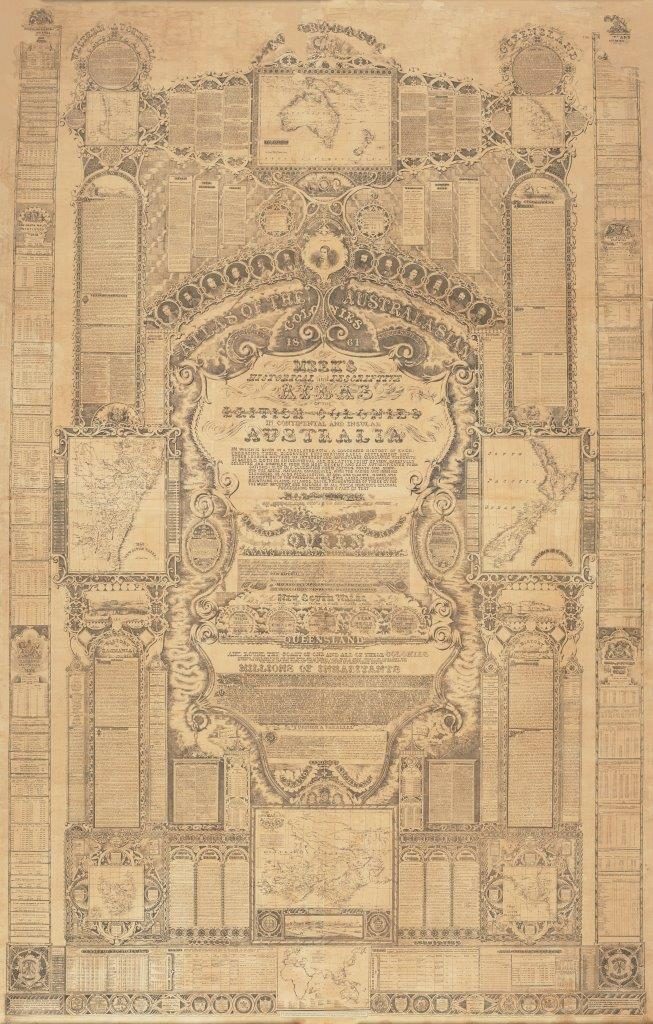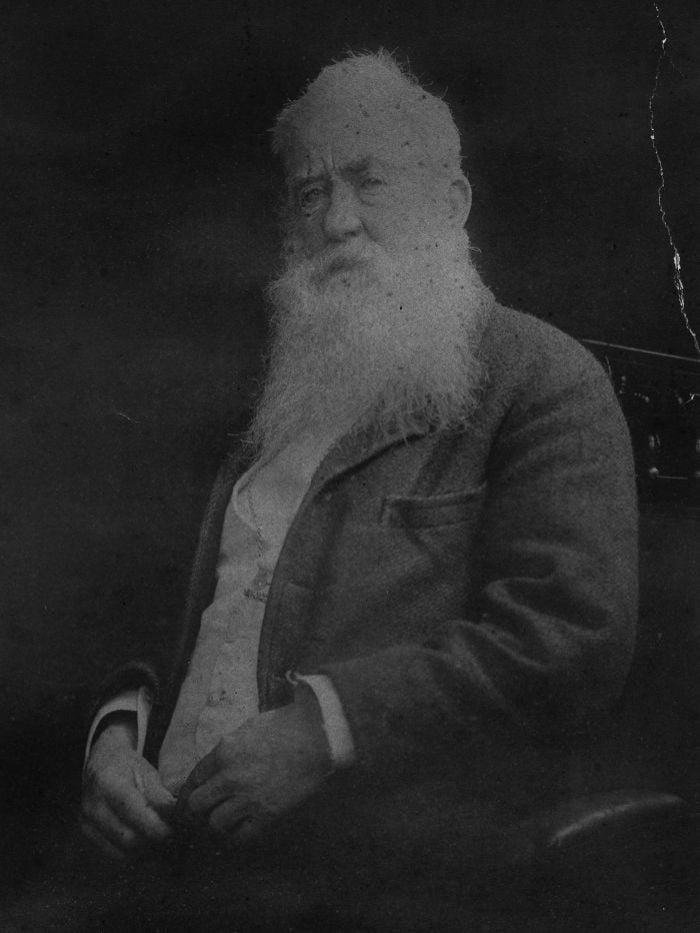
In late 2015, thirteen uncatalogued oversized maps and charts held in the Library’s Maps Collection were prioritised for treatment during a routine collection survey. Further investigation revealed two significant 1862 photolithographs of the 1861 oversized pen-and-ink drawing Meek’s Atlas of the British Colonies in Continental and Insular Australia.
Produced by James McKain Meek in 1861, this chart, more commonly known as Meek’s Atlas, revealed an incredible condensed history of each of the Australian colonies in miniature script, including maps, statistical tables, historical text, census information and seals. The Atlas went on to win first prize at the 1861 Victorian International Exhibition in Melbourne, before being sent on to the London International Exhibition of 1862 where a copy is still help by the Stationers’ Guild.
The 1862 photolithograph of Meek’s Atlas belongs to a series of prints that Meek published as a commercial enterprise. The Library’s copy includes additional printed elements adhered post-production, including thirteen portraits of ‘Discovers and Explorers’ situated above the title banner.
James McKain Meek is frequently described as one of 19th-century Australia’s more interesting characters, despite falling into almost complete obscurity after his death. He joined the colony early, immigrating from Great Yarmouth, England to Sydney in 1838. Moving to Ballarat in 1851, Meek subsequently claimed to be its founder, having built the first permanent residence locally.
Meek went on to navigate an equally distinctive career across Victoria , New South Wales and New Zealand, including disparate occupations as miner, mariner, explorer, schoolteacher, book-keeper, poet, writer, librarian, spa manger and entrepreneur (owner of a sly grog shop).
Between 1859 and 1863, Meek was employed by this Library (then known as the Melbourne Public Library), commissioned by Sir Redmond Barry to complete three significant pen-and-ink drawings: the Magna Charta, the Habeas Corpus Act, and the Petition and Bill of Rights. Meek would continue to produce significant graphic works, including numerous original written commissions.
In view of Meek’s Atlas’ social and historical significance, obvious aesthetic appeal, and poor condition, it was identified as a priority for conservation and digitisation, so it could be made available to the public to view and download online.
Constructed from inherently poor quality materials, the chart had also suffered from previous inadequate storage, poor handling, and pest and mould damage. The Conservation team’s treatment and subsequent rolled storage of Meek’s Atlas utilised a combination of Western and Eastern materials and techniques.

Meek’s Atlas in the Conservation Lab
Learn more about this incredible object’s conservation treatment at a free talk by State Library Victoria conservators Albertine Hamilton and Marika Kocsis at the Australian and New Zealand Map Society conference next Tuesday 23 May at the Queen Victoria Women’s Centre, 9–10.30am.




Nice work. Great to see such an iconic piece getting this sort of attention. As a ‘miniaturist’ himself, Meek would have been impressed with the fine work.
Hi, it looks like this fine man is in my family tree! Thanks so much for publishing this.
Hi again, I think he is my Great Great Great Uncle.